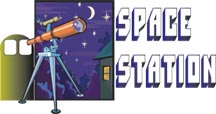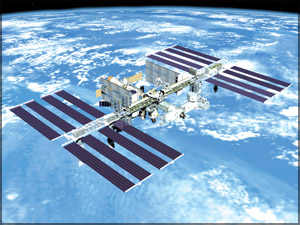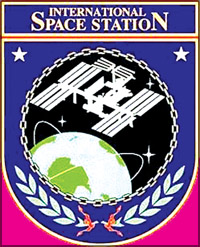The ISS and its
functions
What is the International Space Station?
 Space
exploration has been a real excitement since its beginning, and this
made way to the concept of living in outer space. Well, although it is
fun to a certain extent, that is not the true motive behind all the
pursuing activities to make that idea a reality. Space
exploration has been a real excitement since its beginning, and this
made way to the concept of living in outer space. Well, although it is
fun to a certain extent, that is not the true motive behind all the
pursuing activities to make that idea a reality.
Scientists are of the view that living in outer space would be a
beneficial way to study various things regarding space as well as Earth.
It is this view that really gave birth to space stations, which can be
defined as research facilities assembled in outer space.
The most common are the Salyut and Mir space stations of Russia and
the International Space Station (ISS) which was initiated by the United
States. Let's look at some of the interesting facts about the
International Space Station in today's edition.
The origin of the ISS
As Russia, which was known as the Soviet Union then, succeeded in
coming up with the Salyut and Mir space
|

An artistís view of ISS after completion |
stations, NASA made plans to create its own space station,
which was then suggested as Space Station Freedom. However, it never
turned out to be a success.
U.S. administrative officials then decided to have negotiations with
international partners such as Europe, Russia, Japan and Canada in the
early 1990s in order to build a truly international space station.
This was the first idea of the ISS and in 1993 it was given a
kick-start, naming it as Space Station Alpha. The plan was to get all
the space stations of the partnering countries and make up one big space
station.
The initial plan was to combine NASA's Space Station Freedom,
Russia's Mir-2, and European Space Agency's Columbus.
Out of these, Mir-2 was supposed to be the successor of the Mir space
station, and the Columbus was proposed to be a stand-alone space lab.
However, since then, the ISS has been growing with new modules being
added and the crew changing now and then.
ISS in brief
The space station is located in orbit around the Earth at a height of
about 360 km (220 miles). It orbits Earth in a period of about 90
minutes, which means it goes around Earth about fifteen times per day.
By August 2007, it had completed more than 50,000 orbits since the
launch of the Zarya module on November 20, 1998 which was the initial
part of the ISS. One of the main goals of the ISS is to provide a place
to conduct experiments that require certain unusual conditions.
The main fields of research include biology, materials science,
quantum physics, astronomy, and meteorology.

The ISS is expected to be completed in 2010, with the station
remaining in operation until around 2016.
As of 2007, the ISS is already larger than any other space station.
Ten main pressurised modules are currently scheduled to be part of the
ISS by its completion date in 2010. It currently consists of four main
pressurised modules, which are two Russian modules, Zarya and Zvezda,
and two US modules, Destiny and Unity.
However, the ISS construction is said to be far behind the original
schedule. This is mainly due to the halting of all NASA shuttle flights
following the Columbia disaster in early 2003, as well as delays due to
Shuttle problems. Therefore, construction of the ISS was halted and the
research conducted aboard was limited due to the crew size being two.
Main ISS systems
Power supply
The power source that the ISS uses is none other than the one and
only Sun, which is the power source for all other sources we have down
here on Earth. Sunlight is converted into electricity through the use of
solar panels.
Life support
Life support is important to sustain the small crew on board the
space station, and the ISS Environmental Control Life Support System
handles all these issues.
The ISS Environmental Control and Life Support System provides or
controls elements such as atmospheric pressure, oxygen levels, water,
and fire extinguishing as well as certain other things. The special
system called the Elektron system generates oxygen aboard the station.
Apart from pure life support, the system also collects, processes,
and stores waste and water produced and used by the crew. It is
interesting to know that the system recycles all the fluids from the
sink, shower, toilet (urine) and condensation to be reused.
Altitude control
This deals with maintaining or changing the altitude of the space
station, which simply means the elevation and proper orientation. The
Russian Alttitude Control System takes care of these requirements, using
thrusters to maintain station alttitude.
This also keeps the station in one altitude when a shuttle orbiter is
docked to the space station as well. |
